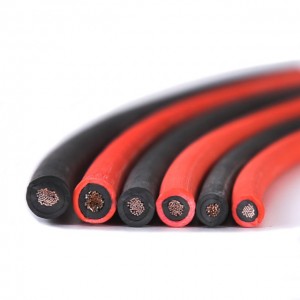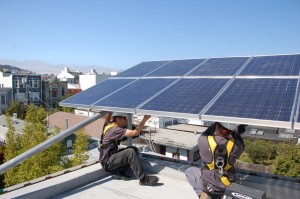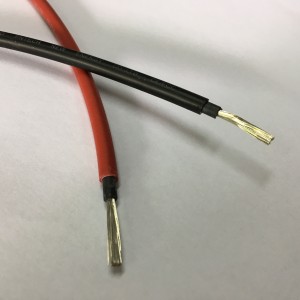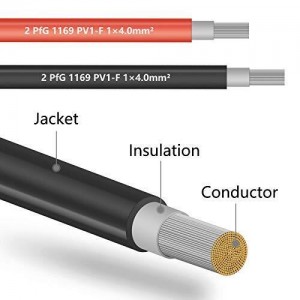Solar cables, also known as photovoltaic (PV) cables, are cables specially designed for use in photovoltaic power generation systems. It is primarily used to connect solar panels or arrays to other system components such as inverters, batteries, and charge controllers. The role of the solar cables is to transmit the electrical energy generated by the solar panels to the rest of the system for distribution or storage.
The unique requirements of solar power systems require the use of specialized cables that meet the specific requirements of solar power. Unlike traditional cables, solar cables are designed to withstand the harsh environmental conditions typically encountered in outdoor solar installations, including extreme temperatures, sun exposure and humidity.
One of the key features of solar cables is their ability to withstand the harmful effects of ultraviolet (UV) radiation. Solar panels are constantly exposed to sunlight, which contains a lot of UV rays. Over time, constant UV exposure can cause the insulation and jacket of ordinary cables to degrade and become brittle, leading to loss of power or even complete failure. The solar cables are manufactured with UV resistant materials ensuring their durability and longevity in outdoor applications.
Another important aspect of solar cables is their ability to handle high mechanical stress. Because solar panels are constantly subjected to mechanical forces such as wind, rain, and snow, the cables connecting them must be able to withstand bending, pulling, and stretching without losing electrical integrity. Solar cables are made from flexible, durable materials that can withstand these physical stresses without compromising system safety or performance.
In addition, solar cables are designed with excellent electrical properties to minimize power loss during transmission. They have low resistance to reduce voltage drop and maximize system efficiency. Copper is widely used as a conductor material for solar cables due to its excellent electrical conductivity and low electrical resistance. In addition, the cables are insulated with materials such as cross-linked polyethylene (XLPE) or ethylene-propylene rubber (EPR) to provide electrical insulation and prevent water ingress.
In terms of safety, solar cables are designed to meet strict industry standards and regulations. They are manufactured with refractory materials to minimize the risk of fire in the event of a system failure or short circuit. Solar cables also undergo a rigorous testing and certification process to ensure compliance with safety standards and guarantee performance in solar applications.
All in all, solar cables are special cables specially designed for solar power generation systems. They are able to withstand the challenges of outdoor installations, including UV radiation, mechanical stress and temperature changes. Solar cables play a vital role in efficiently and safely transmitting the electricity generated by solar panels to other parts of the system, helping to improve the overall performance and reliability of solar power generation systems.
Email: sales@zhongweicables.com
Mobile/Whatspp/Wechat: +86 17758694970
Post time: Aug-08-2023








